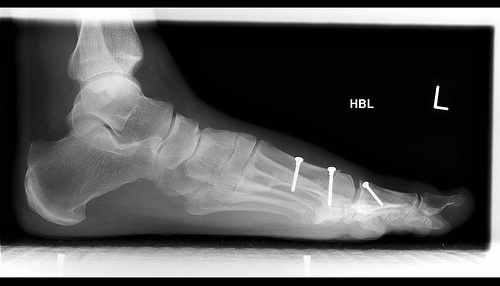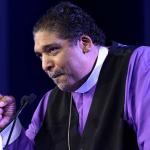Of the books I’ve written, two seem to have the most staying power. One is Postmodern Youth Ministry, my first book, which has managed to stay on many syllabi for the last decade.
The other is The Sacred Way: Spiritual Practices for Everyday Life. I get more appreciative comments on this book than any I’ve written. It’s sold at Renovaré events. And it seems to have some staying power. While it doesn’t sell like a Richard Foster or Dallas Willard book, it is persistent.
Now, with the cooperation of Zondervan, you can pick up The Sacred Way for 99¢ for this week only.
See below for the Table of Contents and an excerpt, if you want to get a feel for it.
The Sacred Way Table of Contents
1. The Quest for God
2. What is Spirituality and How Do You Practice It?
Part II: Via Contemplativa: Contemplative Approaches to Spirituality
3. Silence and Solitude
4. Sacred Reading
5. The Jesus Prayer
6. Centering Prayer
7. Meditation
8. The Ignatian Examen
9. Icons
10. Spiritual Direction
11. Daily Office
Part III: Via Activa: Bodily Approaches to Spirituality
12. The Labyrinth
13. Stations of the Cross
14. Pilgrimage
15. Fasting
16. The Sign of the Cross and Other Bodily Prayers
17. Sabbath
18. Service
Epilogue: Developing a Rule of Life
Notes
Resources
1. Book Resources
2. Web Resources
3. A Short List of Christian Spiritual Classics
Excerpt from Chapter Five, “The Jesus Prayer”
Practice
There is some variation in the actual form of the Prayer. The simple formulation, “Christ, have mercy on me,” echoes the ancient cry of the church, “Kurie eleison, Christe eleison, Kurie eleison (‘Lord, have mercy; Christ, have mercy; Lord, have mercy’).” The fuller text of the Prayer combines the Scripture passages quoted above: “Lord Jesus Christ, Son of God, have mercy on me, a sinner.”
While the final self-referential tag, “a sinner,” seems like a harsh conclusion, it is, of course, the truth. Many modern recitations of the Prayer omit this ending, but I always use it in my own practice. It stings me and awakens me to my own weakness. It also makes the Prayer a loop, for as I conclude by considering my own sinfulness, I’m compelled to once again call upon God’s mercy for my life. In this way, when practiced rhythmically, the Prayer has no beginning and no end.
The Philokalia is full of hundreds of pages of advice about practicing the Jesus Prayer. Among them are the instructions left by 14th-century monks Callistus and Ignatius, who were said to have left behind “full and perfect knowledge of the Jesus Prayer.” They recommend that a person be, firstly, “earnest and undistracted,” and in a place of absolute silence—silence being the most important thing to guard, and it may be the most difficult for us to find in a modern world. For me this often means getting up early in the morning before the family rises—I find the world to be quietest at about 4 a.m.
Callistus and Ignatius also recommend a “dimly lit room.” While the Prayer can later be practiced outside in nature, in a public place, or even while driving, at first it’s necessary to sequester oneself from all visual distractions as well. This way whether the eyes are open or shut, concentration can be focused solely on the Prayer.
Now that the external setting is taken care of, the most important aspect of preparation for the Prayer can take place. With great concentration, one can cause “the mind to descend into the heart with the breath.” At first, this was a concept as foreign to me as it may be to you. However, with some practice, this method becomes a means of guarding the mind from diversions. In fact, many of the Fathers recommend that one bows the head and fixes the eyes on the place of the heart in order to facilitate this concentration.
The “place of the heart” is, obviously, the focus of the Prayer of the Heart. It’s difficult for us to imagine the heart without thinking of pumps, paddles, hospitals, and bypasses. But remember,
In ancient times, before the interior of the body was charted, emotions were ascribed to sites throughout the torso: heart, kidneys, bowels, and womb. The spiritual heart is not the same as that general region of feeling or compassion. Nor is it merely the fleshy pump that beats in our chests. This heart is the spiritual center of a person’s entire being.
So, seated comfortably in a dimly lit room with the head bowed, attend to your breathing, and then begin the prayer in rhythm with your breathing. Breathe in: “Lord Jesus Christ, Son of God”; breathe out: “have mercy on me, a sinner.” Guarding the mind against all distractions, the pray-er focuses during every repetition on the meaning of the words, praying them from the heart and in the heart.
Since clocks were not a reality when the Prayer was first practiced, instead of designating an amount of time to pray, a number of repetitions was determined ahead of time. The pilgrim started at 3,000 repetitions per day—if the normal person takes between twelve and fifteen breaths per minute, this takes between three and four hours. When the pilgrim got to 12,000 repetitions, it was taking him between eleven and fourteen hours. That’s probably out of reach for you and me, but 100 or 500 prayers is a valuable and achievable practice.
In order to keep track of my repetitions, I use a prayer rope (called a chockti in Slavonic and a komvoschinon in Greek). Most are made in monasteries on Mt. Athos in Greece with 100 knots, each knot tied with nine crosses (though they also come with 33, 50, and 1,000 knots). After every 25 knots is a bead, at which the Lord’s Prayer can be recited, and at the end I say the Apostles’ Creed. Prayer ropes can be purchased online (see the Resources section at the end of this book) and at many Orthodox churches.















